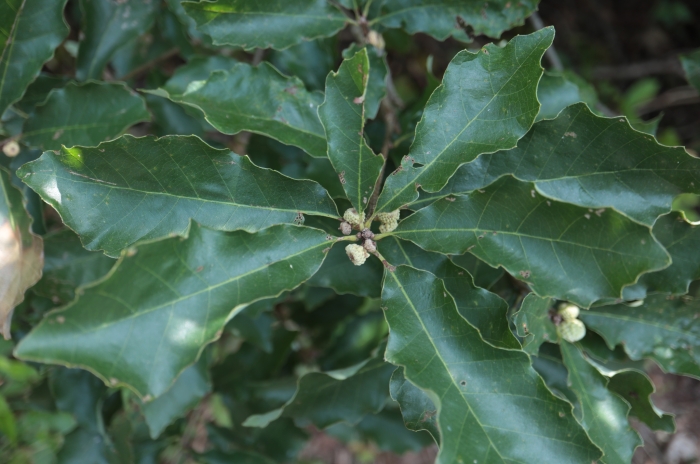Dwarf Chinquapin Oak
(Quercus prinoides)
Dwarf Chinquapin Oak (Quercus prinoides)
/
/

Jeff Clark
CC BY 4.0






































Estimated Native Range
Summary
The Dwarf Chinquapin Oak is valued for its wildlife-friendly acorns, which are a food source for various animals, and for its ornamental qualities, such as the attractive, glossy leaves. It is used in naturalized plantings, as a border shrub, or in wildlife gardens. The plant is adaptable to various soil types, provided they have medium to fast drainage, and it thrives in full sun. While the wood has limited commercial value due to the plant’s small size, it can be used for specialized woodworking projects. Gardeners should be aware that this oak can spread through its rhizomes, potentially becoming more extensive than anticipated.CC BY-SA 4.0
Plant Description
- Plant Type: Shrub, Tree
- Height: 13-20 feet
- Width: 13-20 feet
- Growth Rate: Moderate
- Flower Color: N/A
- Flowering Season: Spring
- Leaf Retention: Deciduous
Growth Requirements
- Sun: Full Sun, Part Shade
- Water: Low
- Drainage: Fast, Medium
Common Uses
Bee Garden, Bird Garden, Butterfly Garden, Drought Tolerant, Edible*Disclaimer: Easyscape's listed plant edibility is for informational use. Always verify the safety and proper identification of any plant before consumption., Rabbit Resistant, Rock Garden, Street Planting
Natural Habitat
Dry upland forests and rocky slopes
Other Names
Common Names: Dwarf Chinkapin Oak , Dwarf Chestnut Oak , Scrub Chestnut Oak , Chêne Nain
Scientific Names: Quercus prinoides , Quercus prinoides var. rufescens , Quercus chinquapin , Quercus rufescens , Quercus prinoides var. prinoides , Quercus prinus var. humilis , Quercus prinus var. pumila , Quercus castanea var. prinoides , Quercus chincapin , Quercus muehlenbergii var. humilis
GBIF Accepted Name: Quercus prinoides Willd.